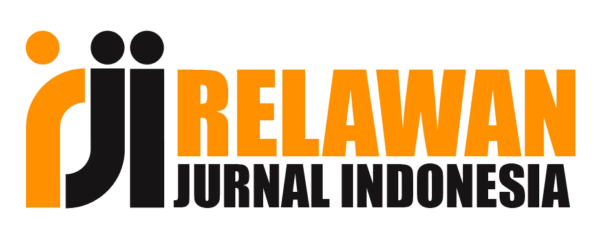Analysis of changes in prospective physics teacher students' conceptions about the concept of optics-eyes using conceptual change texts
Abstract
Keywords
Full Text:
PDFReferences
Abdisa, G., & Getinen, T. (2012). The effect of guided discovery on students’ physics achievement. Latin American Journal of Physics Education, 6(4), 530–537.
Abraham, M., Grzybowski, E. B., Renner, J. W., & Marek, E. A. (1992). Understanding and misunderstanding of eighth graders of chemistry concepts found in textbooks. Journal of Research in Science Teaching, 29(2), 105–120.
Arslan, H. O., Cigdemoglu, C., & Moseley, C. (2012). A three-tier diagnostic test to assess pre-service teachers’ misconceptions about global warming, greenhouse effect, ozone layer depletion, and acid rain. International Journal of Science Education, 34(11), 1667–1686.
Balci, C. (2006). Conceptual change text-oriented instruction to facilitate conceptual change in rate of reaction concepts (Master's thesis, Middle East Technical University, School of Natural and Applied Sciences).
Baser, M. (2006). Effects of conceptual change and traditional confirmatory simulations on pre-service teachers’ understanding of direct current circuits. Journal of Science Education and Technology, 15(5–6), 367–381.
Cetin, D. A., & Geban, O. (2011). Development of a four-tier test to assess high school students’ understanding of acids and bases. Procedia - Social and Behavioral Sciences, 15, 600–604.
De Jong, O. (2008). Context-based chemical education: How to improve it. Chemical Education International, 8(1), 1–7.
Driver, R. (Ed.). (1988). Changing conceptions. Tijdschrift voor Didaktiek der Wetenschappenoe, 6(3), 161–198.
Glasson, G. E. (1993). Reinterpreting the learning cycle from a social constructivist perspective: A qualitative study of teachers’ beliefs and practice. Journal of Research in Science Teaching, 30(2), 187–207.
Herausgeber, B. Z., & Rafl, T. (2013). A practical application of physics education research-informed teaching interventions in a first-year physics service course. Journal of Technical Education, ISSN 2198-0306.
Larkin, D. (2012). Misconceptions about “misconceptions”: Preservice secondary science teachers' views on the value and role of student ideas. Science Education, 96(5), 927-959.
Lawson, A. E. (1988). Three types of learning cycles: A better way to teach science. Paper presented at the Annual Convention of the National Association for Research in Science Teaching, Lake Ozark, MO.
Maknun, J., & Marwiah, M. (2022). Remediation of misconceptions among vocational high school students on the concept of static fluids using the conceptual change model. Journal of Technical Education and Training, 14(2), 49–56.
Mazzolini, A., Edwards, T., Rachinger, W., Nopparatjamjomras, S., & Shepherd, O. (2011). The use of interactive lecture demonstrations to improve students’ understanding of operational amplifiers in a tertiary introductory electronics course. Latin American Journal of Physics Education, 5(1), March.
National Research Council. (1996). National science education standards. National Academy Press.
Nurzaman, R. F. R., Yuningsih, E. K., Agustina, R. D., Zakwandi, R., Dirgantara, Y., & Kuntadi, D. (2021). An optical instrument worksheet in physics class. In Journal of Physics: Conference Series (Vol. 1869, No. 1, p. 012169). IOP Publishing.
Posner, G. J., Strike, K. A., Hewson, P. W., & Gertzog, W. A. (1982). Accommodation of a scientific conception: Toward a theory of change. Science Education, 66(2), 211–227.
Resbiantoro, G., & Setiani, R. D. (2022). A review of misconception in physics: The diagnosis, causes, and remediation. Journal of Turkish Science Education, 19(2), 403–427.
Samsudin, A., Zulfikar, A., Saepuzaman, D., Suhandi, A., Aminudin, A. H., Supriyadi, S., & Coştu, B. (2024). Correcting grade 11 students’ misconceptions of the concept of force through the conceptual change model (CCM) with PDEODE* E tasks. Journal of Turkish Science Education, 21(2), 212-231.
Stepans, S. (2011). Targeting students’ science misconceptions: Using the conceptual change model. St. Cloud, MN: Saiwood Publications.
Suprapto, N. (2020). Do we experience misconceptions?: An ontological review of misconceptions in science. Studies in Philosophy of Science and Education, 1(2), 50-55.
DOI: https://doi.org/10.17509/wapfi.v9i2.70550
Refbacks
- There are currently no refbacks.
Copyright (c) 2024 WaPFi (Wahana Pendidikan Fisika)

This work is licensed under a Creative Commons Attribution-ShareAlike 4.0 International License.
The Journal Wahana Pendidikan Fisika http://ejournal.upi.edu/index.php/WapFi/ is licensed under a Creative Commons Attribution-ShareAlike 4.0 International License
The Journal WaPFi (Wahana Pendidikan Fisika).
All rights reserverd. pISSN 2338-1027 eISSN 2685-4414
Copyright © Faculty of Mathematics and Science Education (FPMIPA) Universitas Pendidikan Indonesia (UPI)










